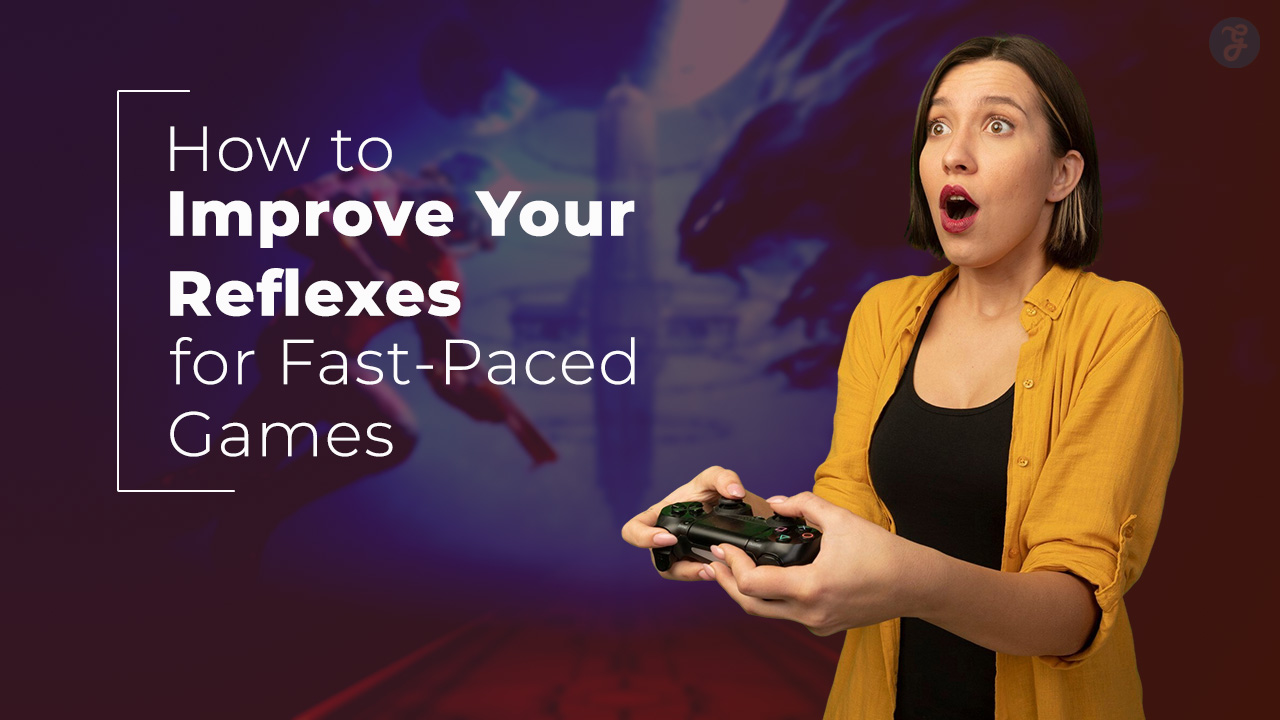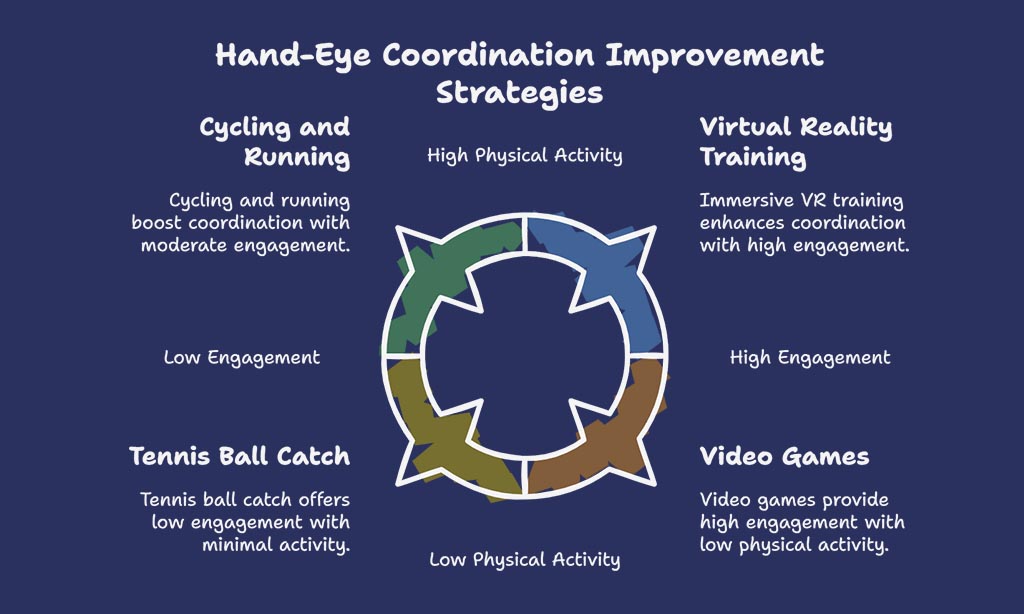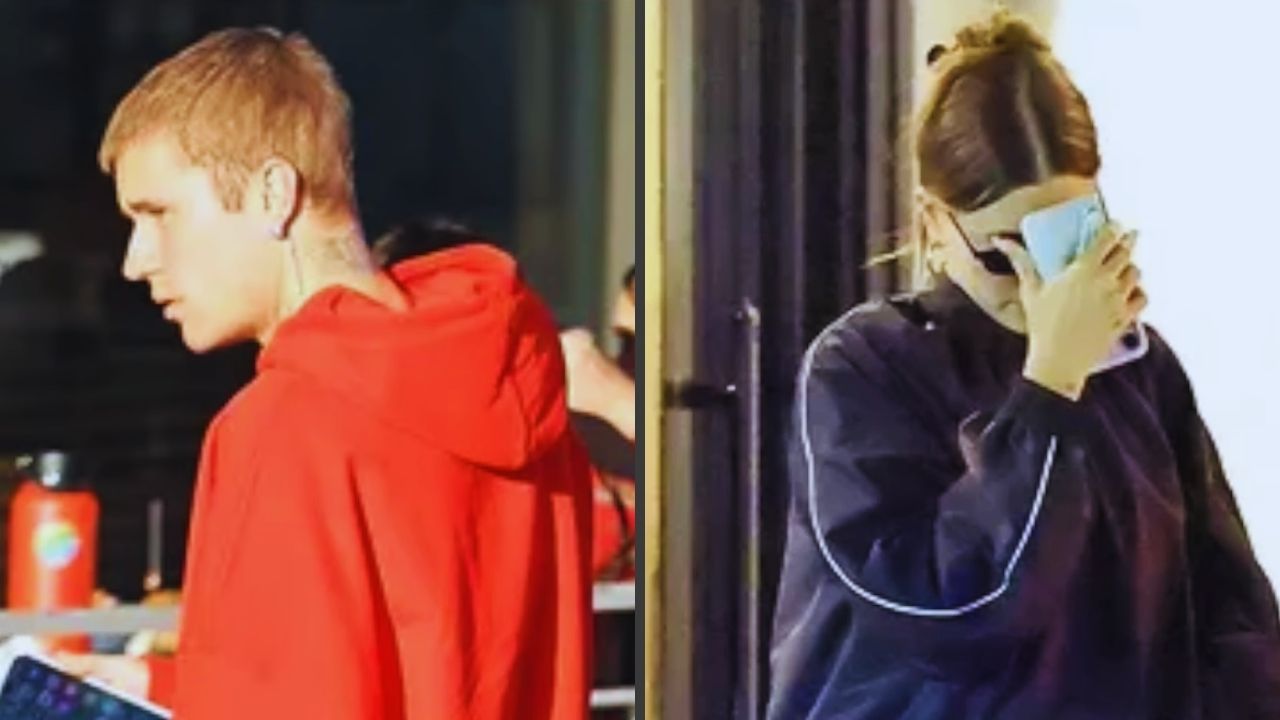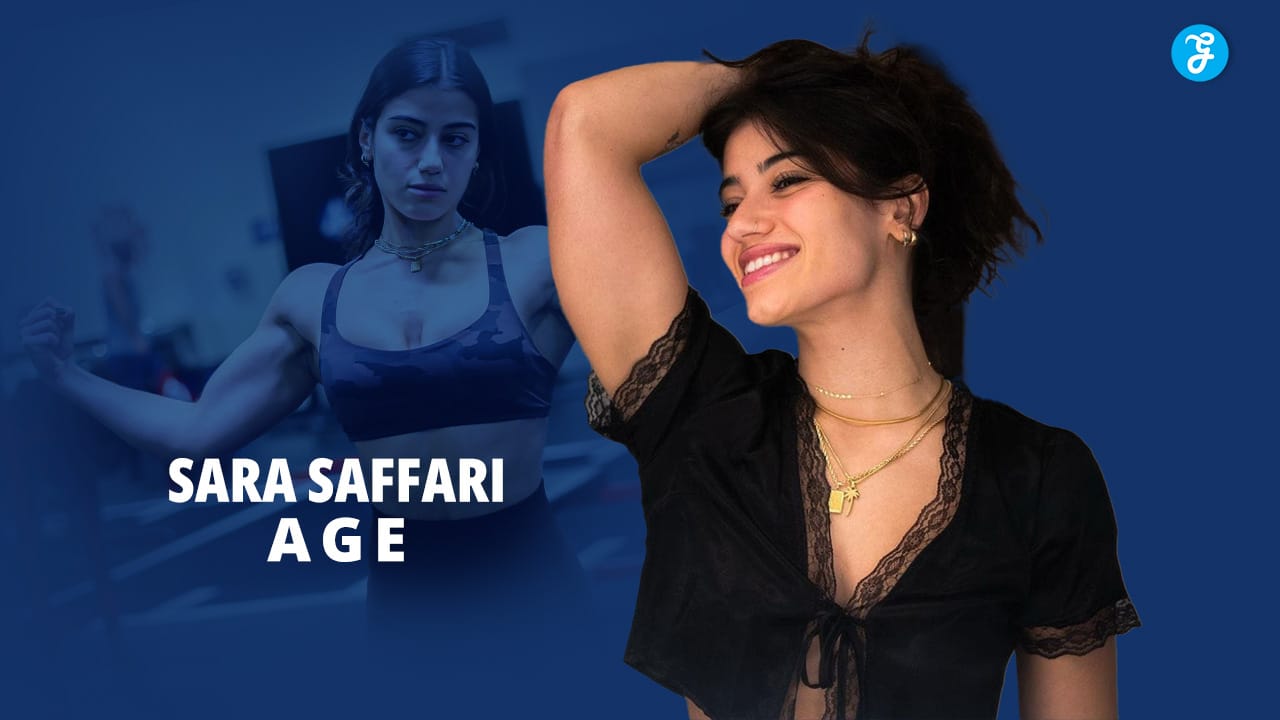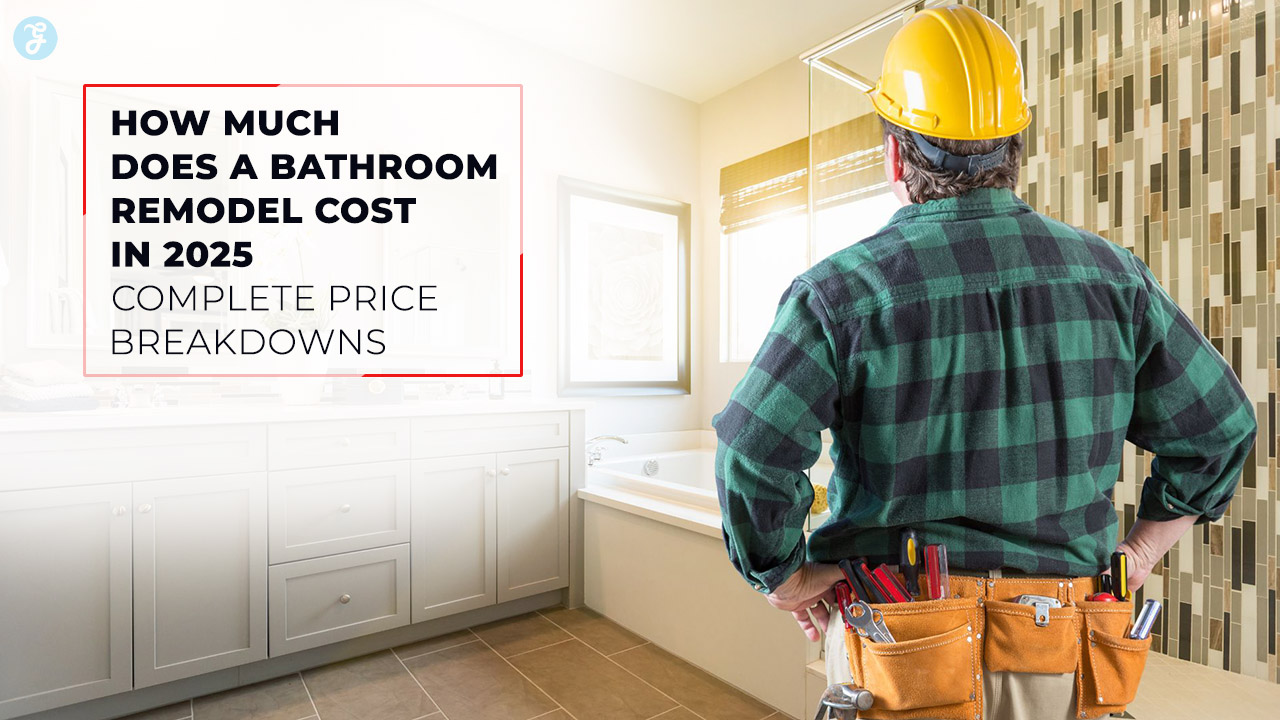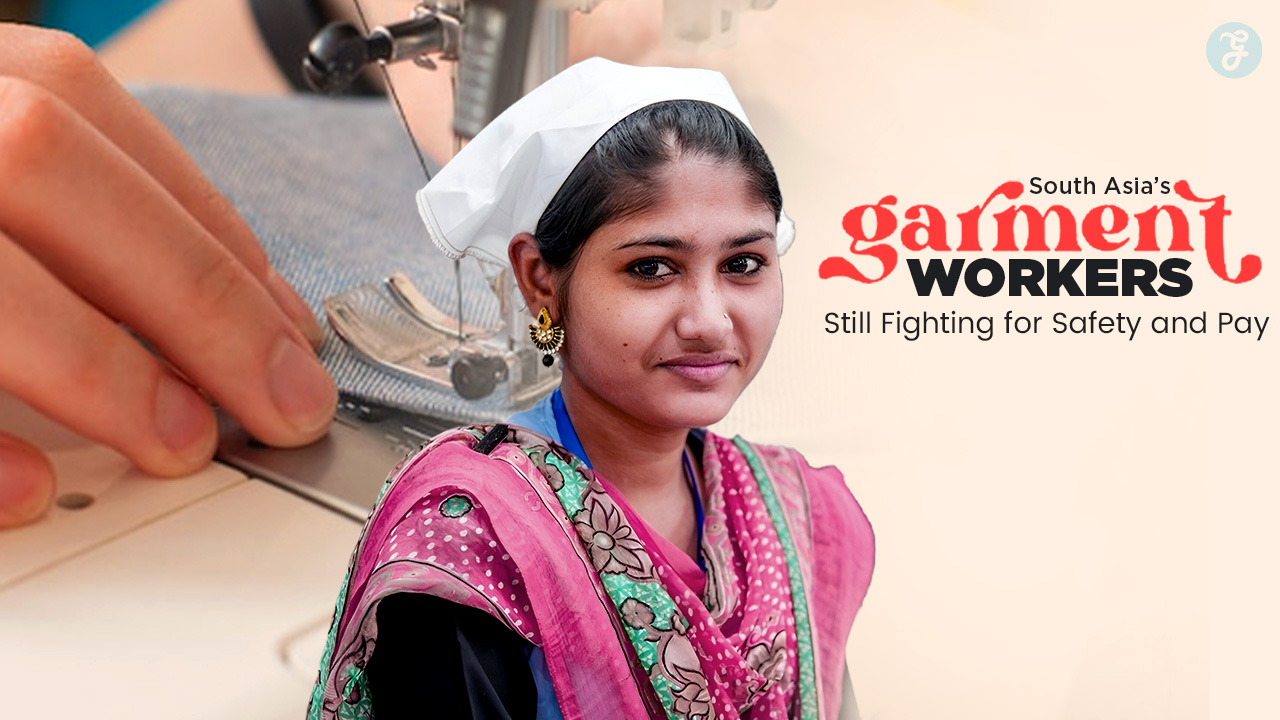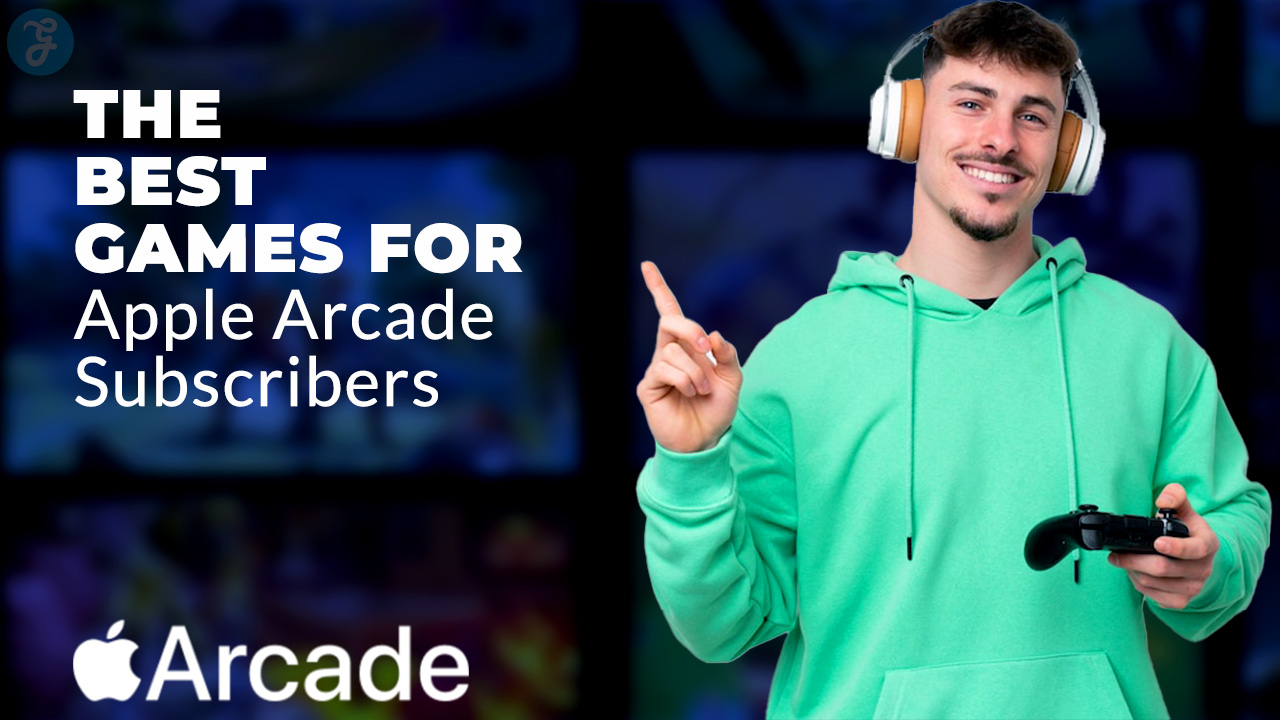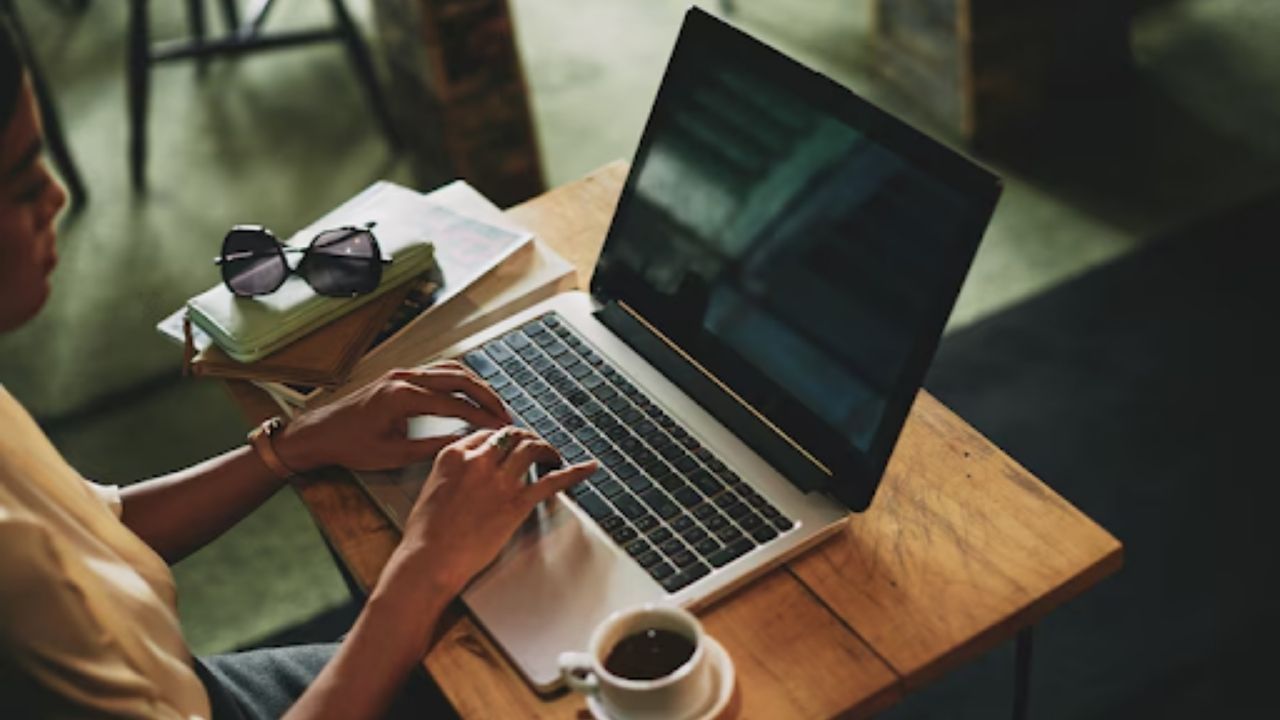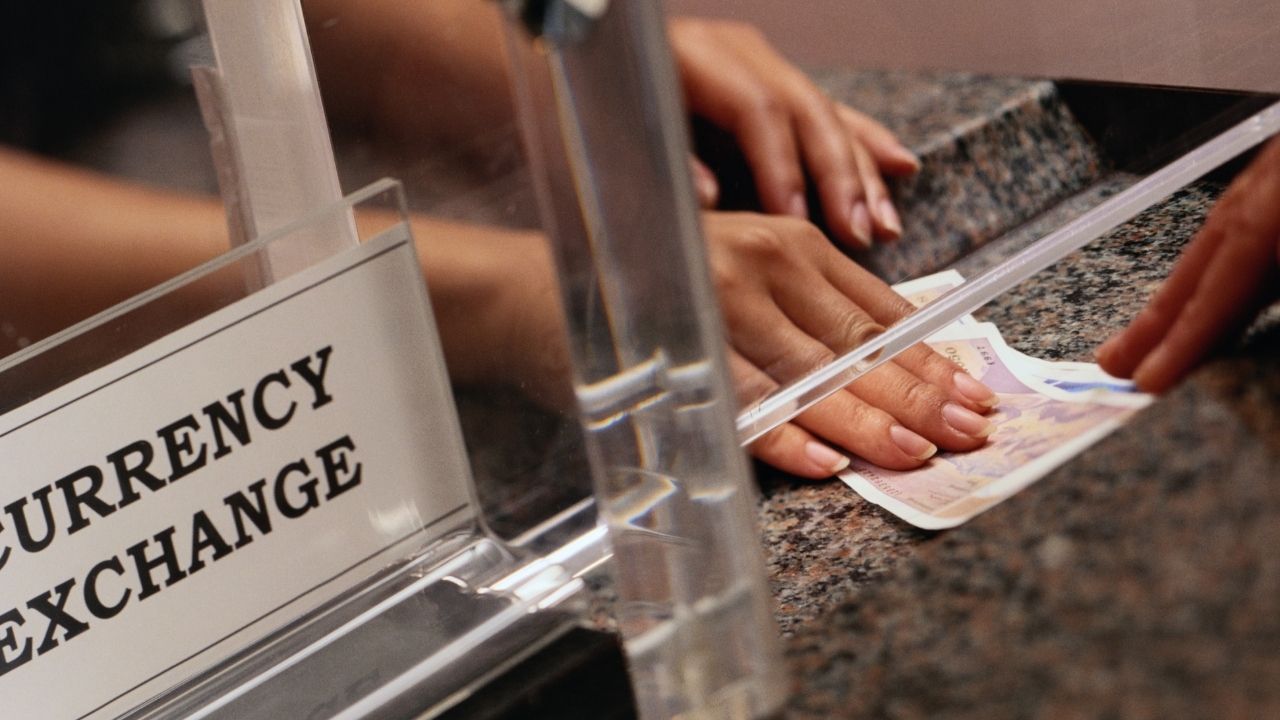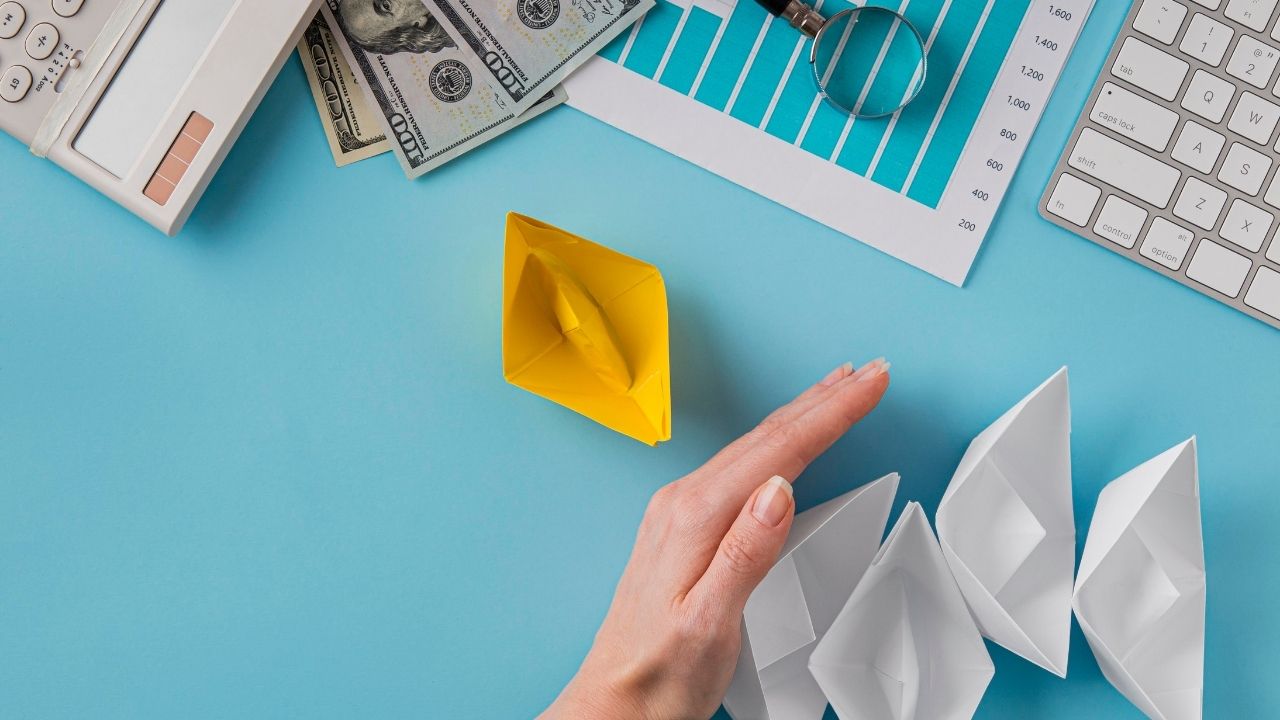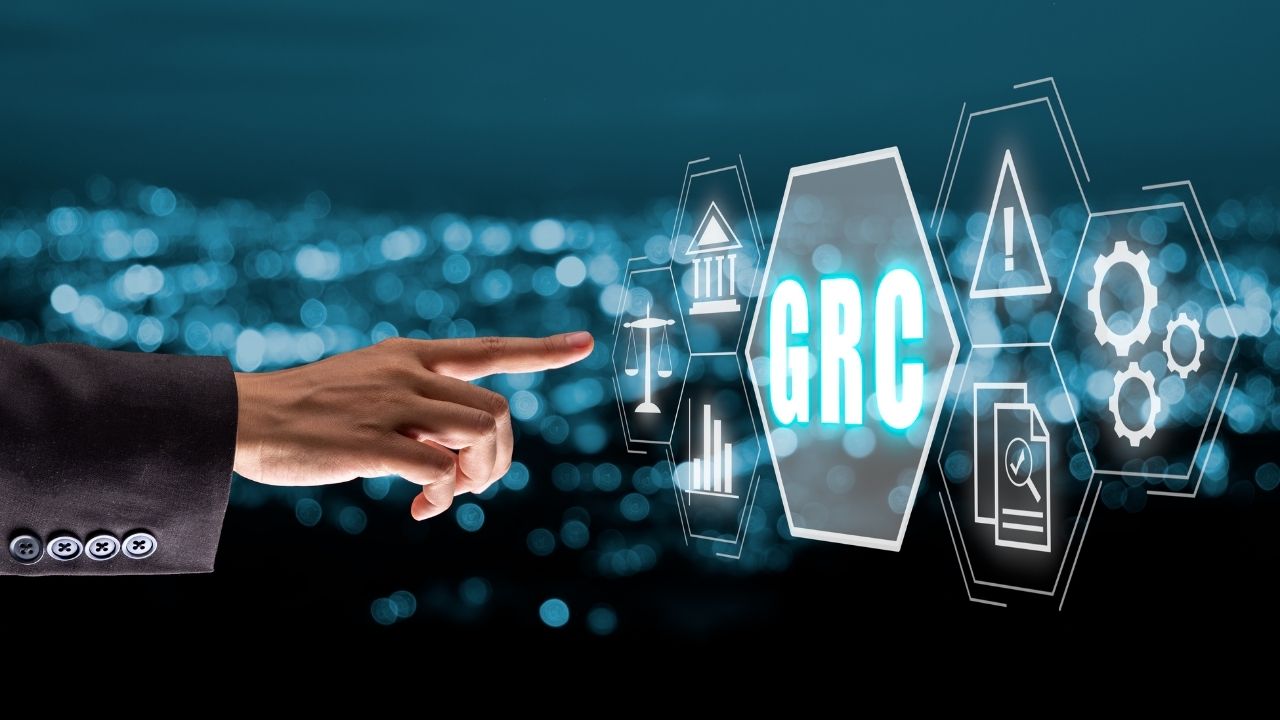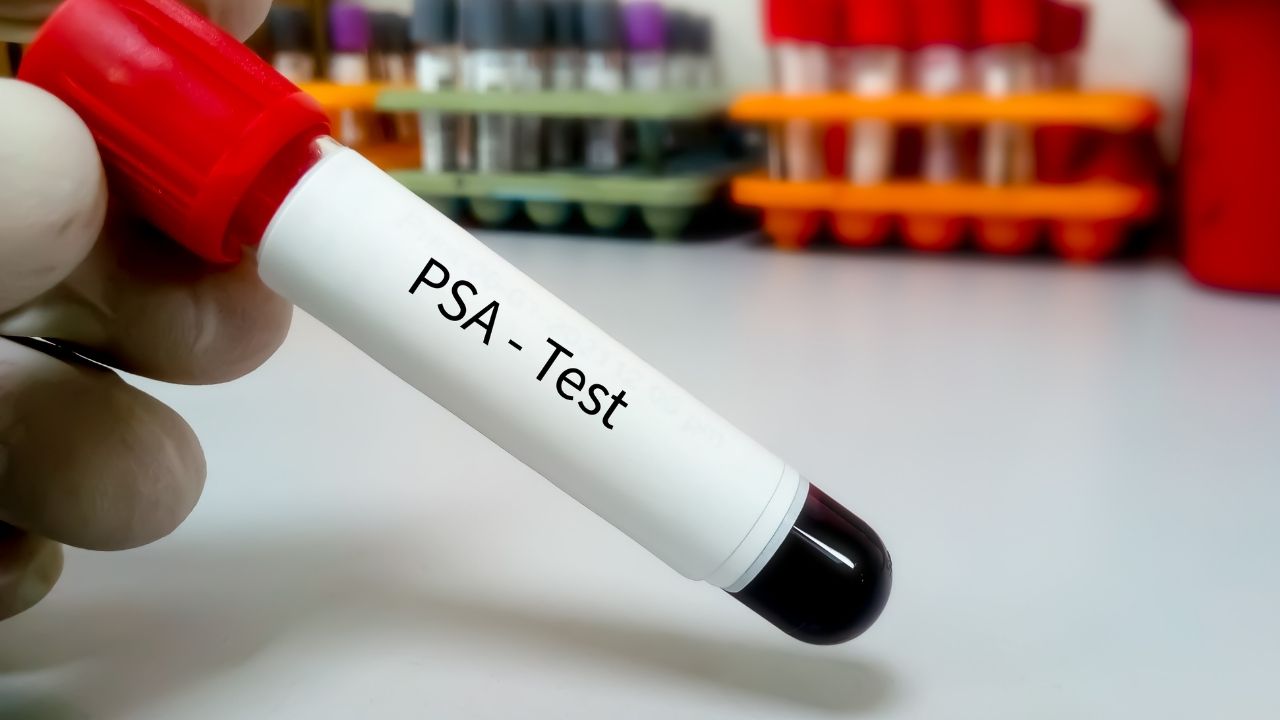Have you ever missed a shot in a first-person shooter as your screen froze in slow motion? Do your reflexes stall when the play speeds up? That delay can cost you wins. You want sharper reaction time and better hand-eye coordination.
Studies show fast reflexes stem from sharp visual attention and swift processing speed. This guide will teach warm-up exercises, visual stimuli drills, and Aim Lab tests to fire up your reaction times.
You will train through Human Benchmark challenges, virtual reality drills, and simple push‑ups for better hand‑eye coordination. Ready to speed up?
Key Takeaways
- Action gamers react 11% faster than non‑gamers and cut reflex time by 13% vs 6% in control titles (Green & Bavelier, 2012).
- VR drills rise reaction speed by 20% (Li et al., 2009) and Aim Lab tests log ms scores on sudden targets (Journal of Sports Psychology, 2021).
- Warm up with 5 min cardio, 2×10 push‑ups, 2 min tennis‑ball drills, 3 min Aim Lab, and sip 8 oz water to fire up muscles and nerves.
- Track ms scores on Aim Lab, Human Benchmark, and Kovaak’s apps. Log data to chart gains and set new goals.
- Sleep 8 hr if under 18 or 7–9 hr adults, eat salmon, berries, and almonds, and use box breathing to stay sharp.
Understand the Role of Reaction Time in Gaming
Fast-paced titles test reflexes at every turn. Reaction time acts as the gap between a target’s move and a player’s click or shot. Gamers face split-second shifts in visual stimuli across first-person shooters, racing, and fighting games.
A study by Green CS and Bavelier D found action video games boost visual attention and speed of processing. Video game players hold an edge over non-gamers by about 11 percent. Simple tests on Aim Lab or Human Benchmark show this gap in real time.
Action titles act like speed workouts for the brain. Latency often dips after age 24 without focused practice. Regular gaming sessions can sustain cognitive processing speed, hand-eye coordination, and situational awareness.
Players run drills that tap cognitive flexibility with fast visual search and changing stimuli. Some hit test of variables of attention or VR sims to boost reflex firing.
Warm-Up Exercises to Prepare Your Body
Warm-ups speed blood and nerves. Quick moves prep muscles.
- Begin with five minutes of cardiovascular exercise. You can pick running, cycling or swimming to fire up blood flow and speed-of-processing.
- Alternate classic strength moves in two sets of ten reps. Try push‑ups and squats to firm your muscles and support physical health.
- Try a reflex-enhancing drill using a ball for two minutes. Bounce a tennis ball off a wall to tap tactile feedback and boost hand‑eye coordination.
- Fire up Aim Lab’s warm-up challenge for three minutes. This tool trains visual stimuli and reaction time in a virtual world.
- Grip a cold bottle of water and sip eight ounces before you start. Hydration helps maintain brain function under stress.
- Loosen muscles with thirty seconds of arm, shoulder, and leg stretches. Gentle moves cut injury risk and aid endurance.
Practice Tracking Fast-Moving Objects
Fast targets can feel like a blur on screen. You need drills that boost your reaction time and hand-eye coordination.
- Watch a bouncing ball pattern for five minutes. This simple visual tracking drill fires up your brain and boosts depth perception.
- Run the Aim Lab Reflex Tester on PC or VR. It logs your times and shows a 25% faster reaction time on sudden targets (Journal of Sports Psychology, 2021).
- Engage in quick strategy games that switch goals every few seconds. Such play sharpens cognitive flexibility and trains responses for first-person shooter game scenarios.
- Hit the Human Benchmark reaction test online. It tracks your clicks on random stimuli, so you measure gains in hand-eye coordination.
- Swap to VR headsets with flying object drills. Studies report 20% better reaction time and depth perception after VR gaming.
- Mix visual drills with simple throws. Toss a tennis ball at a wall, catch it on the bounce, then switch hands to spike your hand-eye coordination by 30% after five hours of play each week.
- Add bodyweight moves like push-ups and deadlifts. These lifts raise blood flow, cut anxiety, and feed your cognitive processes for faster visual stimuli handling.
- Log your practice in a note or app with pmid, nihmsid, and cohen’s d data. This clarity helps you meet a sport psychologist’s plan for deliberate practice.
Use Reflex Training Tools and Apps
Reflex tools help you track your speed. These apps boost hand-eye coordination.
- Use a reaction speed tool on your phone or PC to log your ms score. The app charts each session so you spot trends.
- Try the Aim Lab platform for aim drills that test visual stimuli. It delivers data on reaction time and accuracy.
- Work with the Kovaaks shooter trainer for flick and tracking tasks. You can load custom maps and compare results.
- Jump into the human benchmark site for pattern and color tests. It shows your global rank and boosts cognitive flexibility.
- Pick VR headset drills in a racing or fighting simulation for real world feel. Li et al. (2009) found that gamers gain visual info faster after practice.
- Mix in real video games like strategy games to apply new skills in a live match. You build experience while you adapt under stress.
Incorporate Action Video Games for Training
Action shooters cut reaction time by 13% for veteran gamers. Control titles only trimmed speed by 6%.
- Aim Lab drills test hand-eye coordination with sharp visual stimuli and timed targets.
- Play Call of Duty or Fortnite daily to push your reaction time under real stress.
- Track your top scores on Human Benchmark to watch progress and set new speed goals.
- Try VR simulations to spark cognitive flexibility, using life‑like combat scenarios.
- Add strategy games to test cognitive flexibility and break routine.
- Check Feng, Spence, and Pratt (2007) to see how action video games shrink gender gaps in visuospatial cognition.
Optimize Your Gaming Setup for Faster Responses
Good gear cuts lag and helps you win.
A tidy desk can boost speed.
- Pick a 240Hz gaming monitor with low input lag to sharpen reaction time, shift frames in fast-paced play.
- Pair a high-DPI gaming mouse with programmable buttons to train hand-eye coordination and map macros in video games.
- Place hand warmers on your desk to warm your palms, boost circulation, speed reflexes, mirror physical activity and warm-up exercises.
- Adjust your keyboard and mouse height for neutral wrist posture, reduce strain, mirror lifting weights moves from strength training routines.
- Use Aim Lab drills, Human Benchmark tests and strategy games in daily sessions to log reaction time, note effect sizes and track progress.
- Mount your monitor at eye level and cut blue light with a filter to ease eye strain, raise focus and protect vision.
- Try a VR headset to engage visual stimuli and virtual reality sessions that test sensations, boost spatial skills and cognitive flexibility, slow cognitive aging.
- Keep cables neat, free your hands, limit distractions, apply health and fitness breaks with power naps and relaxation techniques for stress management and to conquer fear.
- Cite Green CS and Bavelier D’s 2012 study (PMCID 22316641) to guide gear tweaks, mirror data in your own experiments.
- Install a desk lamp with soft light to tune room brightness, cut glare and refine contrast during marathons.
Improve Hand-Eye Coordination Through Physical Activities
Physical drills sharpen your timing. They boost hand-eye coordination fast.
- Play catch with a tennis ball against a wall for reflex-enhancing drills.
- Add cycling or running to raise heart rate and sharpen reaction time.
- Do push-ups and squats to build muscle memory in your arms and legs.
- Toss beanbags at a target for better visual stimuli and crisp responses.
- Try virtual reality gear for immersive practice and swift aim adjustments.
- Use Aim Lab sessions to measure reaction time and refine precision.
- Track progress on Human Benchmark tests to see hand-eye coordination gains.
- Commit five hours a week to video games, like strategy titles, to gain a 30% hand-eye coordination lift.
Maintain Focus by Eliminating Distractions
Turn off your phone, close extra tabs, and mute chat alerts. Shove distractions aside like last season’s shoes. Box breathing builds calm and focus, cutting stress in seconds. 2006 research by Bialystok shows that players of video games focus better under stress than others.
High-difficulty strategy games train your mind to ignore noise and wild visual stimuli. Aim Lab drills sharpen hand-eye coordination and speed up reaction time. Human Benchmark tests push you to beat splits and find weak spots.
VR scenarios force fast choices, boosting cognitive flexibility.
Develop Consistency with Daily Practice
Daily drills sharpen reflexes in racing, FPS, or fighting games. Aim Lab and Human Benchmark apps train reaction time and hand-eye coordination. Strategy games boost cognitive flexibility and build visual stimuli skills.
Gamers gain mental stamina and shorten reaction delays.
Set a timer for 15 minutes to play a harder mode in a video game. Choose a tactics title or a VR session and add warm-up exercises first. Use physical training too, a quick hand stretch or push‑up revs blood flow.
This steady schedule eases mental strain, hones problem-solving and teamwork. Consistency wins races, fights, and matches.
Adopt a Healthy Lifestyle: Sleep, Diet, and Exercise
Good sleep, food, and exercise help your game reflexes. A balanced plan boosts your reaction time.
- Aim for 8 hours of shut-eye if you are under 18 and 7 to 9 if you are older. This rest period sharpens focus and memory, keeping reaction time swift.
- Eat salmon, flaxseeds, berries, almonds, and lean meat. This mix of omega-3, antioxidants, and protein feeds your brain and boosts hand-eye coordination.
- Drink water throughout play. Hydration maintains brain function and heightens alertness during video games.
- Skip caffeine after mid‑afternoon. Cutting jolt drinks at least 6 hours before lights‑out helps you fall asleep fast and wake up fresh.
- Warm muscles with stretches or light cardio. Gentle warm-up exercises prime your body for fast action and lower injury risk.
- Try Aim Lab or Human Benchmark to test reflexes and track progress. These free tools fire rapid visual stimuli and train cognitive flexibility.
- Swap some playtime for virtual reality (VR) drills or strategy games that push reaction time. Short bursts of VR sharpen your eye‑to‑hand link and quick thinking.
- Hit the gym or hit a ball. Activities like tennis or ping‑pong train hand-eye coordination with real moving targets.
- Stick to a steady schedule of sleep, meals, and workouts. Consistency cements healthy habits and keeps your reflexes razor‑ready.
- Set alarms for brief breaks. Short rests ease muscle tension, clear your mind, and keep focus fresh during long sessions.
Practice Relaxation Techniques to Stay Calm Under Pressure
Gamer stress can slow your reaction time. Calm nerves speed your moves.
- Box breathing taps the brake on your pulse, inhale for four counts, exhale for four counts, and steady your heart rate.
- Meditate for five minutes to build mental resilience and boost cognitive flexibility, a tip backed by Greenfield et al. (1994).
- Do wrist and neck warm-up exercises to free tension, and prime your hand-eye coordination for intense play.
- Pause after each video games match to clear lingering stress, and reset your focus before the next round.
- Listen to soft beats that block outside noise, you will cut distractions and sharpen your mind.
- Take a brief walk around your desk to shift your mood, that fresh air eases tight muscles.
- Visualize clutch plays in strategy games to calm jitters, see your hands move with confidence.
- Dim room lights and silence phone pings to stay in a calm bubble, you will protect your focus.
- Check your reaction time on a reaction test site after each session to track how calm breathing speeds your reflexes.
Takeaways
Short drills boost reaction time. Quick tests on Aim Lab and Human Benchmark guide progress. Simple ball drills link hand-eye coordination to action. Speed stops and jump drills tune visual stimuli response.
Small game shifts train cognitive flexibility. Calm breath and good rest feed sharp focus. Each day adds more skill. You will feel the change.
FAQs
1. What is reaction time in video games, and why is it key?
Reaction time is how fast you see a cue, and move. It can make or break your play. In fast games, you need to act in the heat of the moment.
2. How can hand-eye coordination drills boost your reflexes?
I get it, you want a quick fix. Try Aim Lab, it has simple drills. Or try the human benchmark site, it tracks your clicks. Each drill warms up your eyes, hands.
3. Do video games truly train reflexes?
Yes, they do. Fast shooters make you fire on a dime. Strategy games force you to spot patterns quick. You learn to juggle tasks, and keep your cool.
4. How often should I train to see real gains?
Daily practice pays off. Spend short bursts on Aim Lab, then test on human benchmark. Play a mix of video games, add some strategy games. In a few weeks, you will feel the boost.


